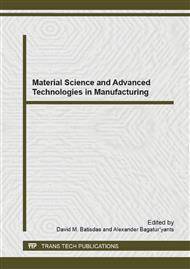p.745
p.749
p.757
p.764
p.768
p.772
p.776
p.780
p.785
The Wide-Applicant Feasibility Study of RDF (Refuse Derived Fuel) - Example for Carbon Ash after the Waste Tire Pyrolysis T
Abstract:
The present research was involved in forming condition of adhesive, Press Temperature, Density etc. In addition to ameliorate strength and thermal performance test of the RDF produced from Carbon ash after the waste tire pyrolysis in resource chemical plant. This study explored optimal condition of Carbon ash-RDF production based on relevant tests to enhance its strength and thermal performance for optimal utilization of Carbon ash-RDF. The results can serve as a reference to the Carbon ash-RDF production process design. The main component of the formula is an adhesive, chemically modified starch as adhesion to make the carbon ash uniformly mix with water. Besides finding a suitable formula, this study also conducted analysis on product property and developed technique to improve process and product property, as an important reference for future studies.
Info:
Periodical:
Pages:
768-771
Citation:
Online since:
January 2014
Authors:
Keywords:
Price:
Сopyright:
© 2014 Trans Tech Publications Ltd. All Rights Reserved
Share:
Citation:


